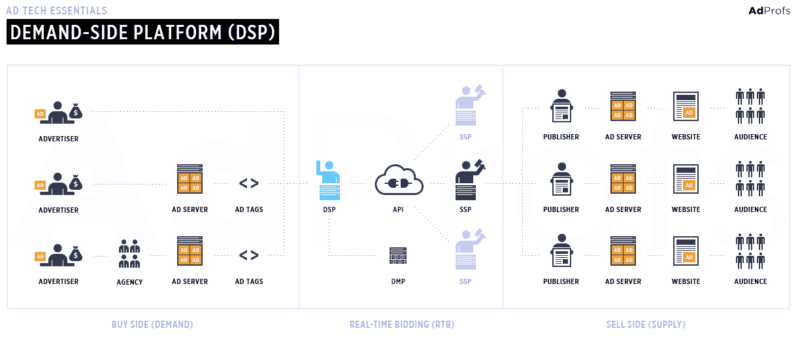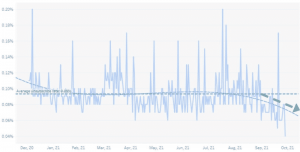How do you determine if your DSP is actually a technology company or just pretending to be one? Columnist Ratko Vidakovic shares the telltale signs to look for.

I previously covered why marketers should demand transparency from their partners. Transparency is an unstoppable force because it roots out inefficiency. And companies that operate in ways that lack transparency, whether in their business model or product, are on the wrong side of history.
Take, for example, demand-side platform (DSP) companies. For the past seven years, there have been dozens, if not hundreds, of companies worldwide claiming to be DSPs. But how many of them are really technology companies? And how many are just pretending to be?
In this article, I’ll cover several major areas worth illuminating to get to the bottom of whether your DSP is real or fake. These questions should help you determine if you are dealing with a real DSP with technology of its own, or an intermediary like an ad network or agency that’s posing as a DSP.
As a refresher, a DSP is a piece of media-buying technology for advertisers. DSP technology allows advertisers to buy media from thousands of publishers in a centralized and automated manner.
The following diagram illustrates where DSPs sit in the ad tech landscape:

Source: AdProfs
Now that you know the function of a DSP, how do you determine if your DSP is real or fake?
Here are four major signs to look for:
1. Lack of self-serve interface
One of the clearest signs that your DSP is fake is the absence of a self-service user interface (UI). Without the ability to log into your DSP and examine the performance of your campaigns, you are flying completely blind. You have to rely on your account manager to send you reports, which stinks, and it jeopardizes the integrity of your campaign data.
In some cases, your “DSP” may have a UI to log into, but you may notice a lack of substance in the reports. You may notice half a dozen to a dozen reporting columns, showing all the basic campaign metrics like impressions, clicks, click-through rate and so on. But nothing beyond that. And certainly nothing deeper than your overall campaign stats.
If you notice that you can’t even pull domain-level performance reports from the interface, you are most likely dealing with a fake DSP that has built a rudimentary reporting interface on top of real DSP technology. In other words, you are working with a middleman, not the underlying DSP technology provider.
(Note: One exception that comes to mind is Criteo. It is, in fact, a real DSP technology provider. However, it provides no domain-level transparency to advertisers, and in practice operates more like an ad network.)
If you work with an intermediary, people are essentially pulling the levers on a DSP behind the scenes to configure, and possibly optimize, your campaigns. What you see in the interface, if there is an interface at all, is all you get without having to request it explicitly from your account manager. If there is no interface at all, and all you get are Excel spreadsheets emailed to you, you are in a vulnerable position because you have to trust those reports at face value.
Furthermore, if a company is telling you that a self-serve interface is unimportant, and promising you outcomes instead, you are dealing with an ad network or agency — or may as well be.
Ad networks promise outcomes and tell you not to worry about how they are achieved. They may even offer you the option to buy on a cost-per-click (CPC) or cost-per-conversion (CPA or CPI) model, where you only pay for those outcomes. That’s the behavior of an ad network, which takes that risk on in an attempt to arbitrage the price they charge you with the price they pay for those clicks and conversions.
That’s the beauty of proper DSPs — they give you full transparency into your media buying campaigns, so that everything can be scrutinized and optimized, with no middlemen extracting value through arbitrage.
2. Lack of technical ability
Building a DSP is no trivial task — it’s hard work. It takes a high degree of technical acumen and a significant investment in engineering and infrastructure to support DSP operations.
Real DSP companies that have their own technology almost always have an application programming interface, or API, which can be used by advertisers to create and control campaigns and pull reports. Real DSPs are never built on the API of another DSP.
On the other hand, fake DSPs are either manually operating a DSP behind the scenes with people, or they have a basic interface built on the API of an actual DSP. In either case, companies that are posing as DSPs cannot offer you the ability to access their API because they don’t have one. The only API available is from their underlying DSP provider.
One of the quickest ways to figure out if a company is a real DSP or not is to ask them for their API documentation. Such documentation is technical and lengthy, so it’s hard to fake. If they can’t provide such documentation to you, they don’t have an API, which means they are probably posing as a DSP.
The reason for all of these questions is to determine whether there is true DSP technology DNA in the company. This is important to figure out, because you don’t want to go through an intermediary when it comes to knowledge and support.
Understanding how the underlying DSP works is not something you want a middleman mediating. The information you receive might ultimately be the same, but there are subtle differences that add up in the long run. And those will almost certainly cost you time and money.
3. Lack of reporting transparency
Fake DSPs are generally the least transparent, for obvious reasons. They operate by obscuring the fact that they are not the underlying technology provider. This could be done by offering everything exclusively through managed services, or by promising to deliver outcomes for marketers, but not transparency into how those outcomes were achieved.
Transparency comes in many forms and affects many areas of digital advertising. The two major areas you want to pay attention to are domain-level reporting and fees.
With respect to granular, domain-level reporting, you need to ask whether your so-called DSP offers this level of transparency. Such transparency provides valuable insights for troubleshooting and optimizing campaigns. It also provides the knowledge necessary to cut closer deals with publishers directly, if you so choose.
You must demand to know where your ads are specifically being shown. Not only is it critical to know for performance reasons, but also for ensuring contextual brand safety. With programmatic buying technology — demand-side platforms — there’s no reason you shouldn’t get thoroughly detailed reporting on where your ads are running and how they’re performing.
A marketer once asked me, “What if my DSP doesn’t provide that kind of reporting?” To which I replied, “Run, fast!” Such detailed reporting should be standard in the industry, but unfortunately, there are many companies in the ad tech world that are either pretending to be DSPs or care more about obscurity than transparency.
There is no good reason you shouldn’t be able to get granular performance reporting from your DSP vendor. If the vendor can’t give you a detailed level of visibility into your campaigns, as real-time as possible, it’s a major red flag. You are either dealing with a fake DSP or an ad network, and you should seriously consider switching vendors.
4. Lack of fee transparency
Knowing how much of your ad budget goes toward media and how much toward the DSP vendor from which you’re purchasing such media is a key part of transparency. Marketers need to know how much of their ad budget goes toward “non-working” expenditures, so that they can be kept at an acceptable level.
Real DSPs should be very transparent about their platform or technology fee percentage. If you’re having candid conversations about tech fees, that’s a good sign. But if there is no platform contract to speak of, and you are instead asked to sign an “insertion order” or something similar to a purchase order for media, you are almost certainly dealing with an ad network or agency, and not an actual DSP.
If you don’t know what percentage of your ad dollars go toward media versus fees, you are at the mercy of your vendor. If they are an ad network, they could be taking anywhere from 40 percent to 60 percent of your ad spend as their margin — or more. If you don’t have this conversation with them, you won’t truly know. Whereas, if you’re using a real DSP, you can expect to see anywhere from 15 percent to 25 percent margins, depending on your spend commitments.
One of the best questions you can ask is, “Describe how $1 spent through your DSP breaks down in terms of media costs versus fees?” In other words, how much of your ad budget is going toward media, and how much is going toward fees? Of those fees, what are they for? How do they break down?
Be on the lookout for fee-related clauses in the terms of service (ToS) or master service agreement (MSA), particularly before signing the agreement. If no such fees are disclosed, be very careful, because you may not be dealing with a real DSP.
Imitators prey on ignorance
How do companies get away with pretending to be DSPs when they are merely intermediaries? Ignorance. If marketers can’t tell the difference between a genuine DSP and a fake DSP, then the imitators can bamboozle us all day. They are exploiting inefficiency in the market, and that inefficiency is ignorance.
That said, I believe there is an evolutionary trend toward transparency and control in advertising. It’s a force that’s driven by education, manifest by the open sharing of knowledge enabled by technology, and it cannot be stopped. That’s why companies that embrace transparency are ultimately poised to benefit from this trend.
In the meantime, beware of companies disguised as DSPs. As a marketer, you risk paying both service and tech fees, when only a service fee is necessary. But more importantly, you risk placing an unnecessary middleman between you and the technology that powers your advertising.
Some opinions expressed in this article may be those of a guest author and not necessarily Marketing Land. Staff authors are listed here.
Marketing Land – Internet Marketing News, Strategies & Tips
(112)
Report Post








